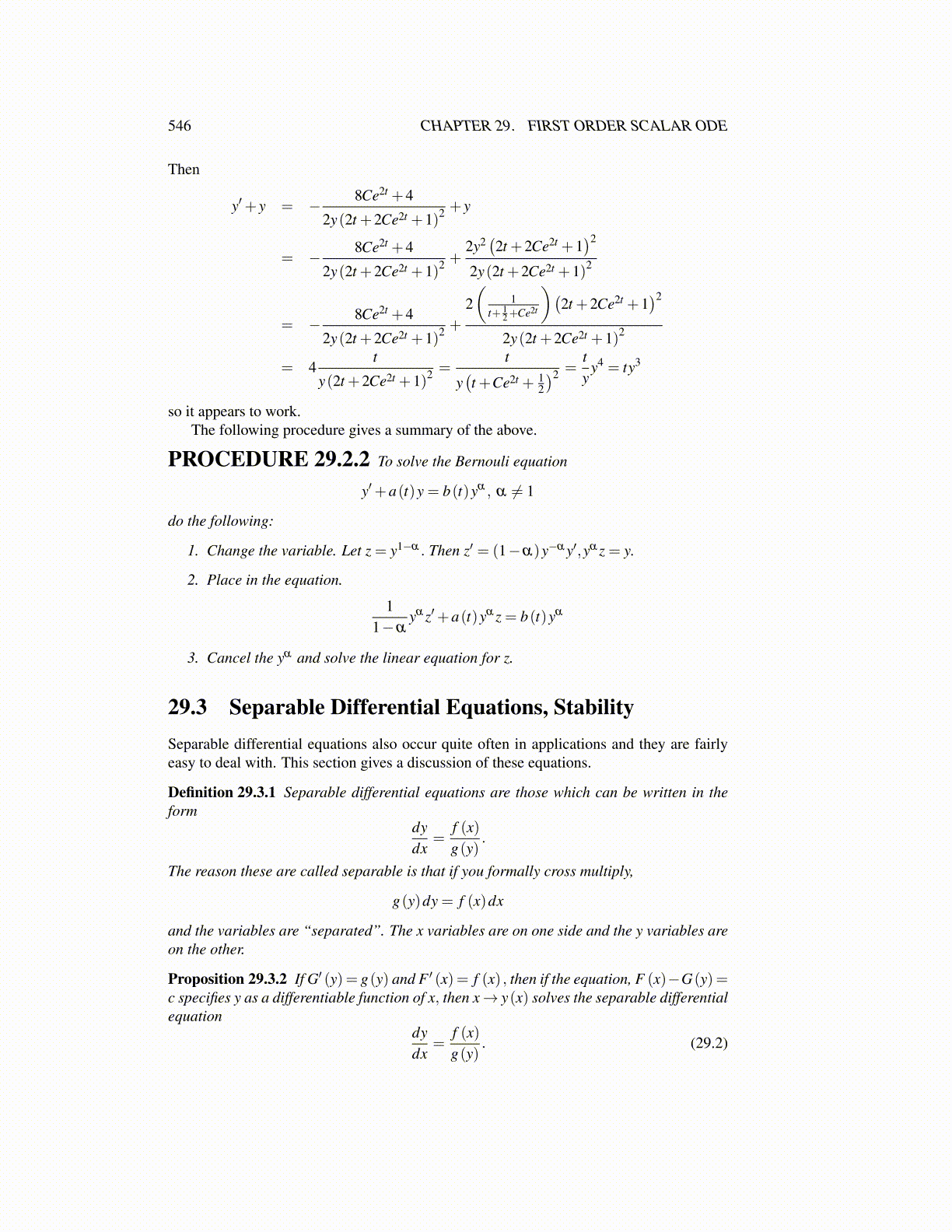
546 CHAPTER 29. FIRST ORDER SCALAR ODE
Then
y′+ y = − 8Ce2t +4
2y(2t +2Ce2t +1)2 + y
= − 8Ce2t +4
2y(2t +2Ce2t +1)2 +2y2(2t +2Ce2t +1
)2
2y(2t +2Ce2t +1)2
= − 8Ce2t +4
2y(2t +2Ce2t +1)2 +
2(
1t+ 1
2+Ce2t
)(2t +2Ce2t +1
)2
2y(2t +2Ce2t +1)2
= 4t
y(2t +2Ce2t +1)2 =t
y(t +Ce2t + 1
2
)2 =ty
y4 = ty3
so it appears to work.The following procedure gives a summary of the above.
PROCEDURE 29.2.2 To solve the Bernouli equation
y′+a(t)y = b(t)yα , α ̸= 1
do the following:
1. Change the variable. Let z = y1−α . Then z′ = (1−α)y−α y′,yα z = y.
2. Place in the equation.
11−α
yα z′+a(t)yα z = b(t)yα
3. Cancel the yα and solve the linear equation for z.
29.3 Separable Differential Equations, StabilitySeparable differential equations also occur quite often in applications and they are fairlyeasy to deal with. This section gives a discussion of these equations.
Definition 29.3.1 Separable differential equations are those which can be written in theform
dydx
=f (x)g(y)
.
The reason these are called separable is that if you formally cross multiply,
g(y)dy = f (x)dx
and the variables are “separated”. The x variables are on one side and the y variables areon the other.
Proposition 29.3.2 If G′ (y) = g(y) and F ′ (x) = f (x) , then if the equation, F (x)−G(y) =c specifies y as a differentiable function of x, then x→ y(x) solves the separable differentialequation
dydx
=f (x)g(y)
. (29.2)